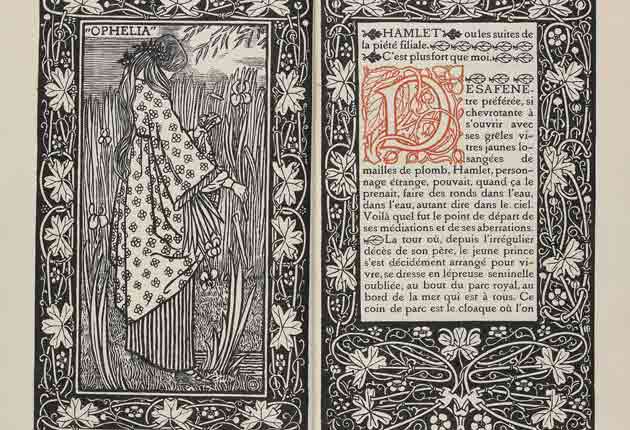Lucien Pissarro in England: the Eragny Press 1895-1914, Ashmolean Museum, Oxford

Your support helps us to tell the story
From reproductive rights to climate change to Big Tech, The Independent is on the ground when the story is developing. Whether it's investigating the financials of Elon Musk's pro-Trump PAC or producing our latest documentary, 'The A Word', which shines a light on the American women fighting for reproductive rights, we know how important it is to parse out the facts from the messaging.
At such a critical moment in US history, we need reporters on the ground. Your donation allows us to keep sending journalists to speak to both sides of the story.
The Independent is trusted by Americans across the entire political spectrum. And unlike many other quality news outlets, we choose not to lock Americans out of our reporting and analysis with paywalls. We believe quality journalism should be available to everyone, paid for by those who can afford it.
Your support makes all the difference.Lucien Pissarro was the eldest son of the Impressionist painter, Camille Pissarro. This pleasingly informative exhibition, on display in a single large gallery at the Ashmolean, tells the story of how Lucien, packed off to England to rid him of the perennial itch to be an artist did not quite do what his mother so fervently desired.
Once in England, Lucien fell in with a group of artists who were adherents of William Morris and the Arts and Crafts Movement. In the 1890s, Morris had founded the Kelmscott Press to produce exquisite, hand-made books. Lucien and his friends wanted to do something similar, and so for the next 20 years he laboured over the spasmodic production of 32 hand-crafted books with his wife, Esther.
This exhibition is extremely well documented and well presented. Most of the books are here, open for us to scrutinise how he set about solving the problem of how to marry illustration with text to pleasing effect, and there is much additional material too – photographs of the family, preparatory drawings and Lucien's sets of engraving tools.
Camille was worried about what Lucien would turn into once he was settled over here. Would he remain true to Nature as the Impressionists had captured it naively, on the wing?
A bit of yes and a bit of no. The fact is that it would have been extremely difficult to capture fleeting impressions of the effect of wind or light on a woodblock print.
Lucien's books ranged widely in theme and time. He produced a selection of the fairy tales of Charles Perrault and even an edition of Milton's "Areopagitica". Some of these books are enormously intricate, exhausting labours of love. After the press closed, he went back to painting, somewhat in the Impressionist manner. Not too badly infected by John Bull after all then.
To 13 March (01865 278002)
Join our commenting forum
Join thought-provoking conversations, follow other Independent readers and see their replies
Comments